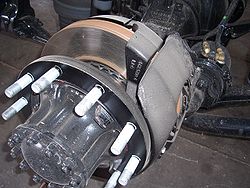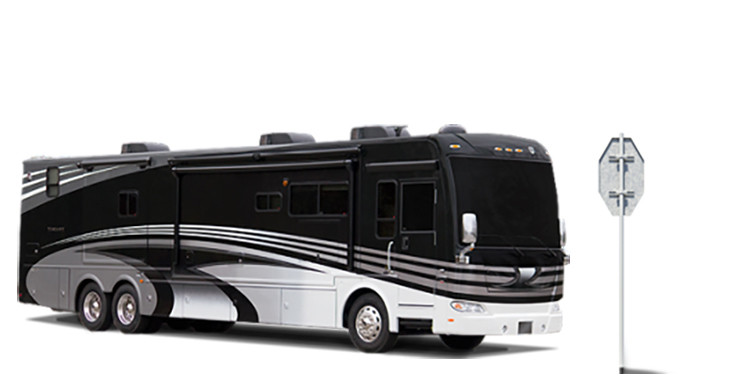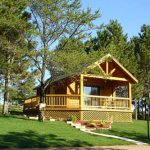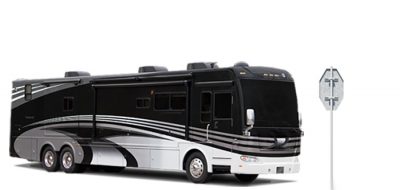Diesel pusher brakes — stop and consider the differences.

Diesel Pusher Brakes – Air Disc
Disc brakes have pretty well replaced all the traditional hydraulic drum type that most of us grew up with. They were first offered as an option on the frontend in the early ’60s. They soon became standard. Now they are standard on all four wheels of automobiles and light trucks sold today.
Disc type brakes have several advantages over the tried-and-true drum and shoe system. Here are just a few:
- Exposed rotors dissipate heat more readily and therefore resist brake fade.
- More brake face area available for increased stopping power.
- Much easier to visually inspect brake condition and wear.
- Disperses water and is far less affected by its presence.
- Generally has far better stopping power in any environment or temperature.
Most gasoline-powered motor homes are equipped with disc brakes today. But what about diesel pushers with air-actuated brakes? Air-powered disc brakes first showed up on some diesel pushers some time around the early 2000s. Like the auto’s history evolved, the front axle was equipped first. Today you can find DP’s with all-drum, front-only discs, and full-all axle air actuated disc brakes.
The Heat is On (and Off)
It comes as no surprise that their ability to shed heat is perhaps the biggest advantage when employed on a heavy coach. Descending steep mountain grades can have a devastating effect on heat build up in the braking components. While auxiliary engine braking and proper foundation brake application techniques can safely handle either, there is no question that the discs are near fail-safe.
The only possible disadvantages of these large air disc brakes are the weight and the cost both at the manufacturer level and for servicing. Disc brake components are normally heavier than the conventional drum type. This is un-sprung weight. Servicing is more labour intensified as unlike an automobile the entire hub must be removed to access the caliper and pads. However, it is doubtful many DP owners will ever reach the time that the rebuilding of these is necessary as a life of 300,000 miles or more is common in an RV application.
The bottom line is either brake type will do the job just fine. Disc brakes however, generally have some superior qualities and are perhaps more driver forgivable for tough grade descents.
Peter Mercer – With The Braking News





